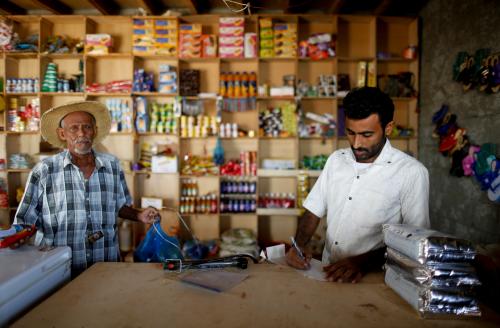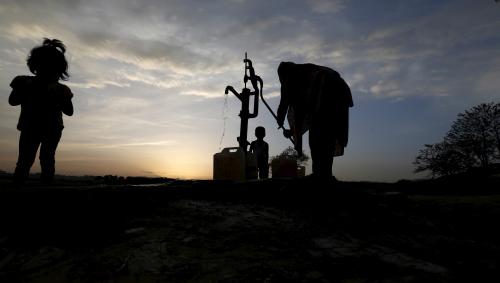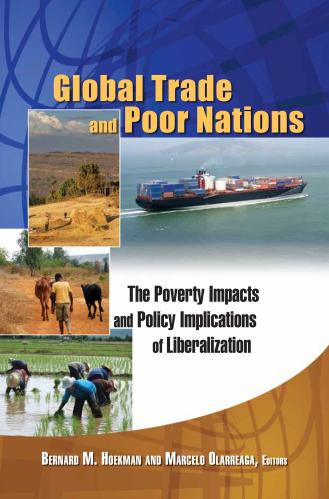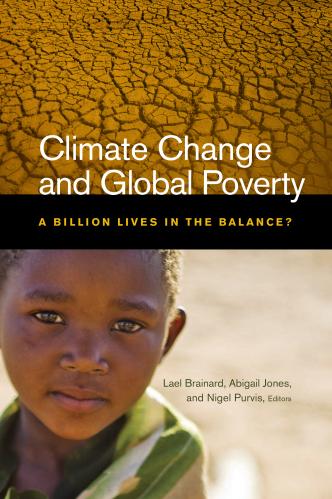This op-ed was originally published by The Hill.
For the past few years, the global development community has continuously celebrated its successes. The Gates Foundation even has a series entitled The Optimist. A major report by the United Nations Development Program and the Oxford Poverty and Human Development initiative found that, in 10 selected countries analyzing changes over time, poverty in various dimensions declined faster among the poorest 40 percent of the population than among the total population.
According to that report, in India, an estimated 271 million people were lifted out of poverty in just one decade. And progress goes well beyond just the reduction of poverty. In an earlier note, I estimated that the world has just passed a tipping point where, for the first time in human history, the number of people that can be classified as middle class or rich represents the majority of the world’s population.
So why not celebrate the fact that many more people across the globe have better living standards, live longer, have better education and prospects for their children, and are moving to cities in record numbers where job opportunities exist and where the “bright lights” of city development offer many more avenues for enjoyment?
Pessimists make two sets of arguments. First, they worry that what has worked in the past is not sustainable and might not work as well in the future. In modeling work on global poverty reduction, my colleagues at the World Data Lab and myself have looked at where poverty is falling across the world.
What we found is that there has been stellar progress in Asia, first in East Asia, including China and Vietnam, and more recently in India and the rest of the subcontinent. But there has been far less progress in Africa. As a result, the pace of global poverty reduction has started to slow. Our model, the World Poverty Clock, suggests that the pace of poverty reduction has slowed from one person escaping poverty every second in 2017 to just 0.5 people per second expected to escape poverty in 2019.
This is happening for several reasons. Most importantly, the bulk of very poor people in Asia have already escaped poverty. Also, global poverty is now heavily concentrated in Africa, which has a region-wide growth rate that lags behind Asia’s. That lower growth means poverty reduction on the continent is slowing. Bad news, considering over one-third of all Africans live below the international poverty line, and they account for over 70 percent of all people in the world living with such deprivations. The biggest pockets of poor people are in nations like Nigeria and the Democratic Republic of Congo, where per capita income growth is stagnant.
Beyond this, there are also worries that the state of our global economy and our global commons are worsening and that poor people will be badly hit. According to the global assessment report on biodiversity and ecosystem services of the intergovernmental science-policy platform, land degradation has reduced productivity in 23 percent of the global terrestrial area; 85 percent of wetlands have already been lost; 1 million species face extinction; extreme weather events have become more frequent; and sea level rise threatens millions in coastal areas. The list goes on, but the point is the same. Man-made changes are delivering material progress, but at a severe cost to nature. This is not sustainable. And the poor will be the first to suffer.
The need to alter course onto a more sustainable development path was formalized by 193 countries in September 2015, when all member states of the United Nations signed onto the Sustainable Development Goals (SDG) agenda. In this agenda, quantifiable (and quantified) metrics of progress have been established, covering far more topics than those considered by the multidimensional poverty index, along with a specific timeframe. Goals should be met by 2030. This timeframe injects an element of urgency into the agenda. Progress is not sufficient reason to be satisfied. It has to be both sustainable and rapid enough to meet the targets.
This is the second reason put forward by pessimists. We are not making progress at a pace even remotely fast enough to achieve the SDGs. In a recent working paper, my colleagues and I looked at 25 indicators and found that the world was on track to get halfway or more to the goal on only five of these. In important areas, including homicides, traffic deaths, air pollution and child obesity, we may even be moving backwards.
Against this backdrop, the United Nations recently hosted a high-level political forum on progress towards the SDGs, with an emphasis on the financing needed to accelerate change. There, too, the mood was serious. There is a growing realization that accelerating change will require more funding in the neediest places, and that this additional funding is not yet forthcoming. In fact, according to the OECD, development aid in 2018 fell 2.7 percent from 2017, with a declining share going to the neediest countries. The OECD also noted that foreign direct investment to developing countries has fallen.
Our own calculations at Brookings suggest that there is a spending gap of about $1 trillion per year if even minimum service delivery standards necessary to meet the SDGs are to be met. While this may seem to be a big number, it is small in relation to the $20 trillion already being spent on the SDGs by governments across the world. The issue is not really about how to mobilize more money. It is about how to channel money into specific places where specific problems are faced by specific people.
We find that there is little hope if countries cannot spend at least $300 per person per year on public services across 10 distinct sectors: health, education, agriculture, flood protection, energy systems, transport infrastructure, social assistance, conservation, water and sanitation, and justice. This may not seem like much, but in many of the world’s poorest countries, where average national income per capita may be less than $500 per year, it is a huge percentage of the country’s total income.
There are some promising ways to raise the required revenues: taxing multinational companies more, especially those engaged in mineral extraction; reducing illicit capital flows; raising more aid and targeting it better; encouraging multilateral development banks to do more in poor countries, especially on infrastructure finance where large returns on investment seem available.
Should we be optimists or pessimists? Probably both. Celebrate success for the very real gains that have been achieved. Worry about the sustainability of those gains, the slowness of progress in the poorest parts of the world, and the seeming inability of donors to respond to the challenges of global poverty in a responsible fashion.
The Brookings Institution is committed to quality, independence, and impact.
We are supported by a diverse array of funders. In line with our values and policies, each Brookings publication represents the sole views of its author(s).









Commentary
Op-edOptimists and pessimists on global development
August 1, 2019